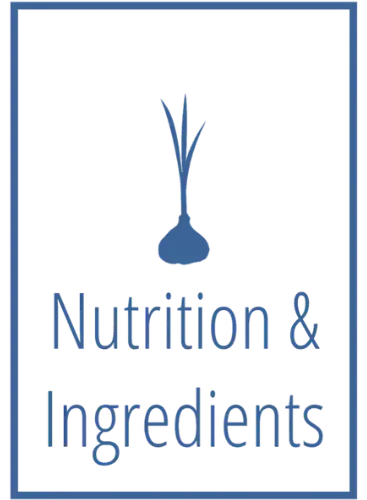Nutrition Facts Label Explained

The US Food and Drug Administration requires manufacturers of packaged food and drink products to include a standardized label that summarizes the nutritional value of the item. Known as the Nutrition Facts label, it is intended to clarify the amount of nutrients in food and beverages so that consumers can make informed decisions about what they buy, eat, and drink.
We created this post to help consumers better understand the both the Nutrition Facts label and how to use the information provided on the label. In other words, it’s important to put the nutrition data into context so that you know whether a food item is a good fit for your daily diet.
Once you understand the Nutrition Facts label, you will be better positioned to know whether or not a certain food product offers the right balance of nutrients and to make healthy choices.
What is Included on the Nutrition Facts Label?
The Nutrition Facts label includes (i) total calories, (ii) a list of nutrients, (iii) the amount of each nutrient measured in grams (g), milligrams (mg), or micrograms (mcg) contained in the food or drink, and (iv) the daily value of each nutrient, reported as a percentage of the total recommended amount of that nutrient to consumer per day.
The amounts listed on the Nutrition Facts label are based on a single serving size, which is also listed at the top of the label.
For example, one serving of Lay’s Potato Chips is about 15 chips, or 28 grams. Then you know that if you eat about 15 potato chips, you have consumed approximately 160 calories from 10 grams fat, 15 grams carbohydrates, and 2 grams protein.
The list of nutrients on the Nutrition Facts label must include: Total Fat, Saturated Fat, Trans Fat, Cholesterol, Sodium, Total Carbohydrate, Dietary Fiber, Total Sugars, Added Sugars, and Protein.
In addition, the FDA requires data on four vitamins and minerals: Vitamin D, Calcium, Iron, and Potassium. Any vitamins and/or minerals that are added to the product by the manufacturer must also be listed.
What is the FDA Recommended Total Daily Value of Each Nutrient?
The following chart provides a guide for all Daily Values based on the FDA recommended Nutrition Facts and Supplement Facts labels.
| NUTRIENT | DAILY VALUE |
|---|---|
| Fat | 78g |
| Saturated Fat | 20g |
| Cholesterol | 300mg |
| Total Carbohydrate | 275g |
| Dietary Fiber | 28g |
| Added Sugars | 50g |
| Protein | 18mg |
| Calcium | 1300mg |
| Vitamin A | 900mcg |
| Vitamin B6 | 1.7mg |
| Vitamin B12 | 2.4mcg |
| Vitamin C | 90mg |
| Vitamin D | 20mcg |
| Vitamin E | 15mg |
| Vitamin K | 120mcg |
| Biotin | 30mcg |
| Chloride | 2,300mg |
| Choline | 550mg |
| Chromium | 35mcg |
| Copper | 0.9mcg |
| Folate / Folic Acid | 400mcg |
| Iodine | 150mcg |
| Iron | 18mg |
| Magnesium | 420mg |
| Manganese | 2.3mg |
| Molybdenum | 45mcg |
| Niacin | 16mg |
| Pantothenic Acid | 5mg |
| Phosphorus | 1,250mg |
| Potassium | 4,700mg |
| Riboflavin | 1.3mg |
| Selenium | 55mcg |
| Sodium | 2,300mg |
| Thiamin | 1.2mg |
| Zinc | 11mg |
Look for foods with nutrients containing % Daily Value (%DV) between 5 – 10%.
- %DV of 5% or less is considered LOW
- %DV of 20% or greater is considered HIGH
- Choose foods that are higher in Dietary Fiber, Vitamin D, Calcium, Iron, and Potassium
- Choose foods that are lower in Saturated Fat, Sodium, and Added Sugars
